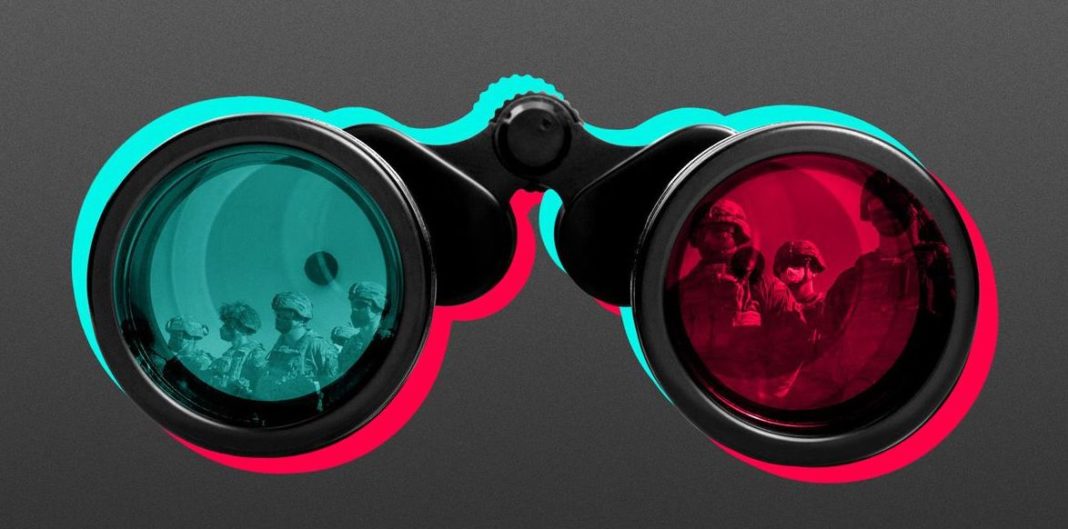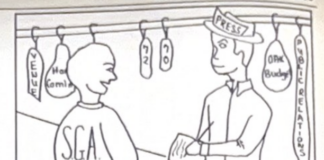The world was shaken when the Russian government launched its first attack on the independent country of Ukraine on Feb. 24. News reporting began almost immediately as major outlets already had reporters out in the field. A majority of these reporters, however, were miles away from the initial conflict, and footage of these attacks was hard to come by.
That’s where TikTok stepped up. Some of the first footage of the conflicts came from Ukrainian TikTok accounts. The use of hashtags allowed the footage to become viral almost instantly. Now “#ukraine” has over 26.6 billion views, “#russia” has over 52 billion views, and “#ukrainerussia” has over 109 million views.
While some of the videos using these hashtags have nothing to do with the conflict, the ones that do serve to help in a myriad of ways. Videos by TikTok users like @wanderiehippie, showcase the beauty and culture of Ukraine before the conflict ever occurred. Others such as @valerisssh, showcase the current conditions a typical Ukrainian citizen is facing. Both work to humanize the conflict and attempt to garner support for their country.
The power TikTok users hold has even gone so far as to make the group appear in Ukrainian President Volodymyr Zelenskyy’s Feb. 23 speech.
“War will take guarantees away from everyone. Nobody will have security guarantees anymore. Who will suffer most of all? People. Who doesn’t want that to happen more than anyone? People. Who can stop that? People,” Zelenskyy said, according to a translation by Max Seddon, the Financial Times Moscow Bureau Chief. “Activists, journalists, musicians, actors, athletes, scientists, doctors, bloggers, stand-up comedians, TikTokers and many others.”
Tiktok itself has even declared their stance on the conflict, as they have recently placed a temporary ban on new uploads or live streams from Russia. This comes in the wake of media companies such as Netflix implementing similar actions. While this may help limit Russian propaganda, it will also restrict the Russian people from accessing non-government-controlled information regarding this conflict. The ramifications of this decision are still unknown and will likely be considered before any other moves are made by these companies.
Users should be aware of both intentional misinformation and misleading information on the platform. Since the start of the war, numerous live videos have surfaced appearing to be Ukrainian civilians hiding out from the conflict around them. These videos often appear on the “For You” pages of millions of people, many of who are moved to send “gifts” which the creator can then trade in for money. However, these live streams may not be everything they appear to be.
Youtube channel Kitboga has a whole video dedicated to pointing out the inconsistencies in these viral clips. While many of these videos don’t expressly say they depict Ukrainian citizens in hiding, hashtags such as “#ukraine” and “#russia” as well as piped-in air-raid siren sounds are definitely meant to give that illusion. Many of these videos, however, maybe just that – an illusion. As Kitboga points out, many include fake air-raid sirens, looped footage and plants that do not seem native to that region.
TikTok videos are also circulating that show footage seeming to be real videos of the conflict in Ukraine, but are in fact either video game footage or videos from older conflicts– some not even from that geographic region. This false information may seem meaningless, but it often serves to undercut the public’s trust in the media and their journalistic endeavors.
While TikTok is a place filled with highly knowledgeable people, it can also be the perfect breeding ground for misinformation to spread. Be sure to watch out for content made to shock, scare or sadden you, as that is a typical indicator of misinformation. Confirm the video’s information before spreading it to other people and beware of unknowingly spreading propaganda.
Spreading accurate, legitimate information during wartime is key to creating informed opinions and discovering ways to help. The best thing we can do for the innocent people of Russia and Ukraine is to make sure we don’t waste our time on scams and focus on the real issues surrounding this conflict.
For questions/comments about this story email thewhitarts23@gmail.com or tweet @TheWhitOnline





